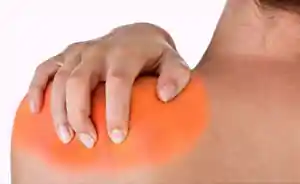
What Is Arthritis?
Rheumatic conditions are typically characterized by pain, aching, stiffness and swelling in and around one or more joints. The symptoms can develop gradually or suddenly. Certain rheumatic conditions can also involve the immune system and various internal organs of the body.
Arthritis Symptoms
- Joint pain – Joint pain can be caused by injury affecting any of the ligaments, bursae, or tendons surrounding the joint.
- Injury – Injury can also affect the ligaments, cartilage, and bones within the joint. Pain is also a feature of joint inflammation (arthritis, such as rheumatoid arthritis and osteoarthritis) and infection, and extremely rarely it can be a cause of cancer of the joint.
- Pain – Pain from arthritis can be constant, or it may come and go. Pain might be isolated to one place or felt in many parts of the body.
- Swelling – Some types of arthritis cause the skin over the affected joint to become red and swollen, and to feel warm to the touch.
- Stiffness – Stiffness is a typical arthritis symptom, with some forms of arthritis causing increased stiffness upon waking up in the morning, after sitting at a desk, or after sitting in a car for a long time, and others resulting in stiffness after exercise or characterized by persistent stiffness.
- Difficulty moving a joint – Moving a joint or getting up from a chair should not be hard or painful and can indicate arthritis or other joint problem.
Other symptom which include as
- Stiffness, which may be worse in the morning, or after use
- Malaise and fatigue
- Poor sleep
- Muscle aches and pains
- Tenderness
- Difficulty moving the joint
- Inability to use the hand or walk
- Muscle weakness
- Loss of flexibility
- Decreased aerobic fitness
Types of arthritis
There are several diseases where joint pain is primary, and is considered the main feature. Generally when a person has “arthritis” it means that they have one of these diseases, which include:
- Osteoarthritis
- Rheumatoid arthritis
- Gout and pseudo-gout
- Septic arthritis
- Ankylosing spondylitis
- Juvenile idiopathic arthritis
- Still’s disease
What lifestyle changes can help people with arthritis?
- Weight loss and maintaining a healthy weight reduce the risk of developing OA and can reduce symptoms if you already have it.
- Eating a healthy diet is important for weight loss. Choosing a diet with lots of antioxidants, such as fresh fruits, vegetables, and herbs, can help reduce inflammation. Other inflammation-reducing foods include fish and nuts.
- Foods to minimize or avoid if you have arthritis include fried foods, processed foods, dairy products, and high intakes of meat.
- Regular exercise will keep your joints flexible. Swimming is often a good form of exercise for people with arthritis because it doesn’t put pressure on your joints the way running and walking do. Staying active is important, but you should also be sure to rest when you need to and avoid over exerting yourself.
- At-home exercises you can try include:
- The head tilt, neck rotation, and other exercises to relieve pain in your neck
- Finger bends and thumb bends to ease pain in your hands
- Leg raises, hamstring stretches, and other easy exercises for knee arthritis
Treatment of Arthritis
- Panchkarma Chikitsa
- Naturopathy Therapy
- Vasti Chikitsa
- Rasayana Progya
- Lepana Chikits
- Marma Chikitsa
- Diet Therapy
- Life style Modification Programme
- Yoga, Pranayama, Exercise
